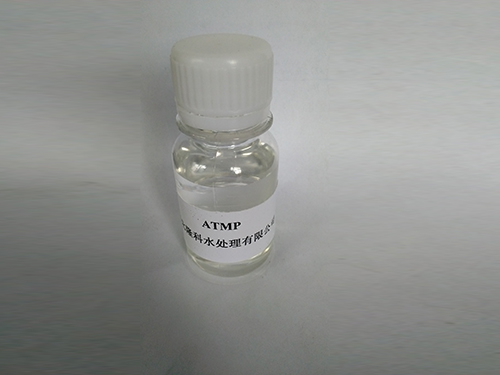Exploring the Properties and Applications of Benzododecinium Compounds in Modern Chemistry
The Role of Benzododecinium in Antimicrobial Research
Benzododecinium, a quaternary ammonium compound, has recently garnered attention in the field of antimicrobial research due to its efficacy and versatility as a biocide. Derived from the broader category of benzyl compounds, benzododecinium exhibits strong antibacterial, antifungal, and antiviral properties, making it an essential subject for investigation within various applications such as healthcare, food safety, and industrial processes.
Chemical Structure and Properties
Benzododecinium typically appears as a white to off-white powder or solid, soluble in water and various organic solvents. Its molecular formula is C21H36N+, reflecting its long hydrocarbon chain that contributes to its amphiphilic nature. This characteristic allows benzododecinium to interact with cell membranes effectively, leading to disruption and ultimately cell death. Its ability to fold and penetrate biological membranes is crucial for its antimicrobial activity, as it destabilizes the lipid bilayer of microbial cells, rendering them more susceptible to lysis.
Antimicrobial Mechanism
The efficacy of benzododecinium as an antimicrobial agent can be attributed to its mode of action. The positively charged nitrogen atoms in the compound facilitate its binding to the negatively charged components of microbial cell membranes, particularly the phospholipids. This electrostatic interaction is vital, as it enhances the permeability of the cell membrane, allowing the compound to penetrate into the cell. Once inside, benzododecinium can interfere with essential cellular processes, such as respiration and nutrient transport, which ultimately leads to cell death.
Research indicates that benzododecinium is particularly effective against a wide range of pathogens including Gram-positive and Gram-negative bacteria, yeasts, and certain viruses. Studies have shown that it exhibits synergistic effects when used in combination with other antimicrobial agents, enhancing its efficacy and extending its spectrum of activity.
Applications in Healthcare
benzododecinium

In healthcare, benzododecinium has shown great promise as a disinfectant and antiseptic. Its ability to kill pathogens on contact makes it suitable for use in various healthcare settings, including hospitals and clinics. It is commonly found in hand sanitizers, surface disinfectants, and personal care products. Given the rising concern over antibiotic resistance, the use of benzododecinium presents an exciting alternative or adjunct to traditional antibiotics, particularly in controlling hospital-acquired infections.
Moreover, benzododecinium's stability and low toxicity profile make it an attractive candidate for use in medical devices and coatings. For example, incorporating benzododecinium into the surfaces of catheters or implants can significantly reduce the risk of microbial colonization and biofilm formation, which are major contributors to infection in clinical settings.
Food Safety Applications
Beyond healthcare, benzododecinium is also being explored for its applications in food safety. Its antimicrobial properties can be leveraged to prevent spoilage and extend the shelf life of perishable goods. Coating food packaging materials with benzododecinium can inhibit the growth of pathogenic microorganisms and spoilage organisms, thereby enhancing food safety and quality. Furthermore, it can serve as an antimicrobial agent in food processing, where maintaining hygiene is paramount.
Environmental Implications
As with any biocide, the environmental implications of widespread benzododecinium use must be considered. Potential risks include the development of microbial resistance and ecological impacts on non-target species. Therefore, continued research is essential to better understand these risks and to establish safe and effective concentrations for various applications. Additionally, regulatory bodies must evaluate benzododecinium thoroughly to ensure it meets safety standards for environmental and human health.
Conclusion
Benzododecinium represents a significant advancement in antimicrobial research, showcasing potent properties that hold promise for various applications. From healthcare to food safety, its ability to combat a wide range of pathogens positions it as a valuable tool in the ongoing fight against infections and spoilage. However, as interest in this compound grows, it is critical to approach its use responsibly, with an emphasis on understanding its ecological impacts and developing strategies to mitigate potential risks. Continual research and innovation will ultimately dictate the future role of benzododecinium in our society, reinforcing its significance in public health and safety.
-
Understanding Polycarboxylic Acids: Properties, Applications, and Future PotentialNewsJul.28,2025
-
Scale Inhibitor Explained: How to Protect Your System from Limescale and Hard Water DamageNewsJul.28,2025
-
Scale and Corrosion Inhibitors: Essential Chemicals for Industrial Water System ProtectionNewsJul.28,2025
-
Polyaspartic Acid: A Biodegradable Polymer for Sustainable ChemistryNewsJul.28,2025
-
Isothiazolinones: A Versatile Antimicrobial Class with Industrial Power and Regulatory ChallengesNewsJul.28,2025
-
A Deep Dive into 2-Phosphonobutane-1,2,4-Tricarboxylic Acid (PBTC)NewsJul.28,2025





